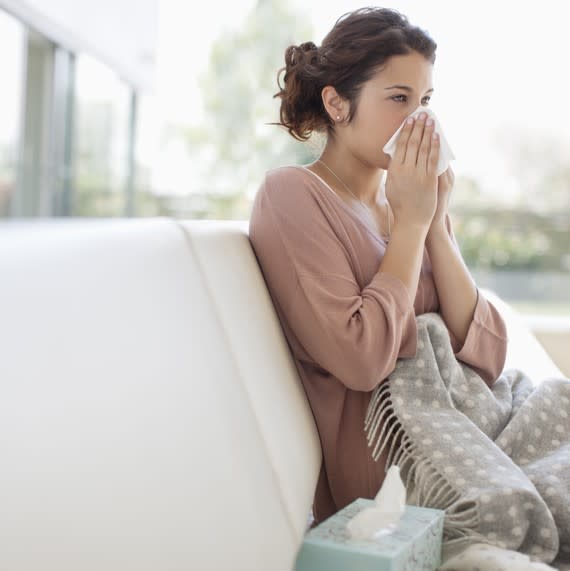How Are Spring and Fall Allergies Different? Plus, How to Deal with Each

Itchy eyes, stuffy nose, congestion, and sneezing? If you suffer from allergies these symptoms feel all too familiar. Allergy season can be broken up into a few key categories and tagged to specific triggers. For example, during springtime (late March to the end of May), tree pollen is a major culprit. During the summer (end of May to early August) grass pollen becomes more prevalent. In fall, before the first frost, triggers include weed and ragweed pollen, plus outdoor mold spores. Unfortunately, each person will experience "allergy season" differently based on what their triggers are—year-round ones include indoor allergens like pets, dust mites, cockroaches, and mold. "The main difference is the pollens that are driving the symptoms," explains Dr. June Zhang, an allergist with the South Bay Allergy and Asthma Group. To help you stay comfortable, we pulled together everything you need to know about fall and spring allergies, including how to get through each.
Related: How to Clean Your Home to Reduce Allergies
Location Matters
Tree pollen is the main source of allergens in the spring, grass pollens are most troublesome during the summer, and weed pollen strikes in the fall. That said, it can also vary by location. "Here in the Bay Area, we have allergens a bit more year-round, since our tree season can start as early as January and grass lasts through the summer," explains Zhang. She warns that allergy sufferers in or traveling to the East Coast will notice more prominent weed pollen allergies.
Find Your Trigger
It's important for allergy sufferers to identify exactly what they are allergic to so they can avoid their triggers, which can be diagnosed by way of an allergy test (you'll need to ask your doctor for more information). Typically, skin testing is the most common, but blood work can occasionally be requested in certain situations. "I would recommend over-the-counter oral antihistamines like Zyrtec, nasal sprays, and eye drops as needed," says Zhang. "However, if your allergy symptoms are really severe and you find that you need medicine year-round, allergy shots are another great option to consider."
Allergy Proof Your Home
While you can't avoid allergy season all together, Dr. Tania Elliott, a board-certified allergist and Flonase spokesperson, suggests a few tactics to minimize your symptoms. For spring and fall pollen, she says to use a pollen tracker app, like the Weather Channel Allergy Tracker, to determine when it is going to be a high pollen count day. Apps like this can help you determine if you should limit your time outdoors; when that's not possible, you can proactively take allergy medicine to reduce your symptoms. Another important tip: Always take off your shoes before coming inside (shoes can track pollen indoors!) and be sure to keep your windows closed during allergy season. In terms of managing indoor allergens, Elliot says to keep your pets out of the bedroom and use an air filter to reduce pet dander. When it comes to your home décor, opt for blinds (instead of curtains) and go for a leather over upholstered furniture since fabric can house dust mites. For the bedroom, always use dust mite proof covers for mattress, pillow, and box springs. And, as pretty as they may look, both decorative pillows (or stuffed animals in your child's room) may be the culprit of your discomfort.
Consider Your Diet
There's a condition called pollen food allergy syndrome, also known as oral allergy syndrome, that causes certain proteins in fresh fruits to mimic the symptoms of common pollens. For example, melons (like cantaloupe and watermelon) can trigger those allergic to ragweed, but with more serious side effects. "When people eat fresh fruits, allergy cells in the mouth are activated, resulting in localized mouth and throat itching as well as swelling," explains Elliot. "Interestingly, when the food is cooked, the protein gets denatured (broken down), and people don't react to it."
Don't Confuse Your Allergies with a Cold
A good rule of thumb is to remember that two reactions that can occur with a cold don't occur with allergies: fevers and swollen lymph nodes. "Pay attention to the timing of symptoms. Allergies last for weeks to months versus a cold which only lasts five to seven days," says Elliot.
(function(d, s, id) { if (d.getElementById(id)) return; var js = d.createElement(s); js.id = id; js.src = '//cdn4.wibbitz.com/static.js'; d.getElementsByTagName('body')[0].appendChild(js); }(document, 'script', 'wibbitz-static-embed'));
